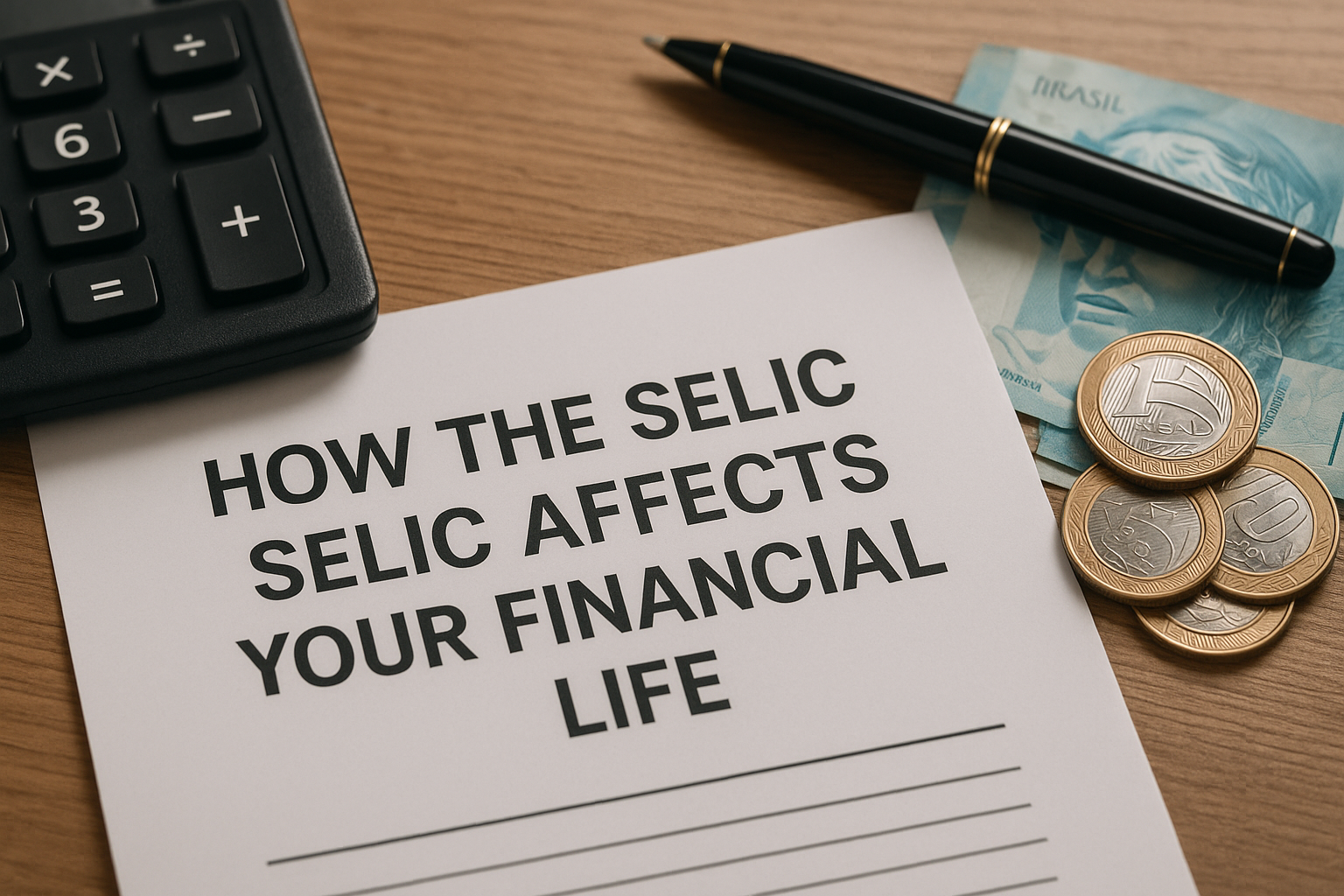Understanding how key economic indicators affect your day-to-day life is essential to building solid financial planning. One of the most important of these indicators in Brazil is the Selic rate, which directly influences everything from the interest on loans to the return on your savings. Whether you’re a beginner in finance or someone already investing, knowing how the Selic works is crucial to making better decisions.
What Is the Selic Rate?
The Selic rate (Sistema Especial de Liquidação e de Custódia) is the Brazilian central bank’s benchmark interest rate. It’s essentially the main instrument the Central Bank uses to control inflation and regulate the economy.
In simpler terms, it is the basic interest rate of the economy, and it serves as a reference for all other interest rates in the country, such as loans, financing, and even certain types of investments.
When you hear news like “The Central Bank has increased the Selic rate by 0.5 percentage points,” it means they are adjusting the cost of credit and stimulating or slowing down consumption and investment in the economy.
Why the Selic Rate Changes
The Central Bank adjusts the Selic rate mainly to control inflation. If inflation is high, increasing the Selic rate helps reduce the money supply in circulation, making borrowing more expensive and encouraging people to save rather than spend. On the other hand, when inflation is low or the economy is sluggish, a lower Selic stimulates credit and spending, which can help economic growth.
These adjustments are made by a group called the COPOM (Monetary Policy Committee), which meets every 45 days to analyze the current economic situation and decide whether to increase, decrease, or maintain the Selic rate.
How It Affects Your Daily Financial Life
1. Loan and Credit Card Interest Rates
When the Selic rate rises, banks tend to increase interest rates on credit cards, personal loans, and financing. That means it becomes more expensive to take out a loan, finance a house or a car, or even leave a balance on your credit card.
On the flip side, when the Selic falls, loans may become cheaper, encouraging consumers to take on credit and boosting economic activity.
Tip: If you plan to finance something or take out a loan, it’s worth keeping an eye on the Selic rate trend. A lower Selic generally means lower interest rates.
2. Return on Fixed-Income Investments
The Selic has a direct impact on fixed-income investments like Tesouro Selic (Brazilian Treasury bonds), CDBs, LCIs, and LCAs. When the Selic rate increases, these investments tend to offer better returns, which is great for conservative investors.
For example, the Tesouro Selic, which is indexed to the Selic rate, becomes more attractive when rates are high, providing predictable and safe returns.
Tip: In times of high Selic, fixed-income becomes a strong ally in your investment portfolio, especially if you’re looking for low risk.
3. Savings Account Returns
Brazilian savings accounts follow a rule: when the Selic is above 8.5%, the return is fixed at 0.5% per month + TR (Reference Rate). If the Selic is 8.5% or less, the savings account yields 70% of the Selic + TR.
This means that when the Selic rate is low, the profitability of the savings account drops significantly, often becoming less attractive than other fixed-income options.
Tip: Don’t leave your money sitting in a low-performing savings account—compare other fixed-income products.
4. Mortgage and Financing
For long-term financial commitments like mortgages or car loans, the Selic rate is fundamental. Financial institutions use it as a basis for calculating interest rates on these products. The higher the Selic, the more expensive it is to finance, which may reduce your purchasing power.
Tip: In periods of high Selic, it may be wise to postpone large financing decisions or negotiate better terms.
The Selic Rate and Inflation: The Cause-and-Effect Cycle
It’s important to remember that the Selic rate is both a tool and a response. It is adjusted to combat inflation, but its adjustments also impact consumer prices.
- When Selic goes up: Consumption tends to slow, loans become expensive, and inflation may be reduced.
- When Selic goes down: Credit becomes cheaper, consumption rises, and inflation may increase if not well managed.
Tip: For long-term financial planning, always consider the inflation scenario alongside the Selic rate.
How Investors Should React
Investors can benefit from understanding and anticipating movements in the Selic. Those with diversified portfolios may adjust the share of fixed income and variable income depending on the moment in the economic cycle.
- In periods of rising Selic, favor conservative investments such as Tesouro Selic, CDBs, or funds with fixed-income strategies.
- In periods of falling Selic, explore variable-income opportunities or even multi-market funds, depending on your risk profile.
Conclusion: Why You Should Keep an Eye on the Selic Rate
Even if you’re not an economist or a financial professional, understanding how the Selic rate influences your financial life gives you the ability to make smarter decisions, whether it’s about loans, savings, or investments.
By following the Selic rate and understanding its impact, you take a step further toward financial autonomy. It’s not about predicting the market but about being prepared to adapt your financial strategy in the face of changes in the economy.

